16 of the Best Perennials to Plant for Year-Round Color
Bring color to your yard every year with these popular perennials


Thanks to their longer life spans, perennials can boost your curb appeal year after year. While annuals last just one year, and biennials complete their life cycle over the course of two years, perennials will bring color to your landscape for two or more years. That means you can plant once and enjoy the view for quite some time before needing to purchase new flowers. Here are some of the best perennials for your yard.
1. Knock-Out Roses

Best for: Low hedges, border plants, and planting around your foundation
Designed for easy care by breeder Will Radler, Knock-Out roses are a family of perennial roses of varying colors. The original rose, Radrazz, is a deep pink flower bred for disease resistance and is a low-maintenance plant for your yard, perfect for the lazy gardener.
Hardiness zone: Most Knock-Out roses suit hardiness zones 5 to 11. Some work for zones 4 to 11. Petite Knock-Out roses work in zones 4 to 10.
Water: These perennial rose bushes prefer infrequent, deep waterings rather than frequent waterings in small amounts. They are drought-tolerant.
Soil: These rose bushes require neutral soil with a pH of 5.5 to 6.5.
Sunlight: Knock-Out roses prefer 6 to 8 hours of full sunlight daily.
2. Coneflowers
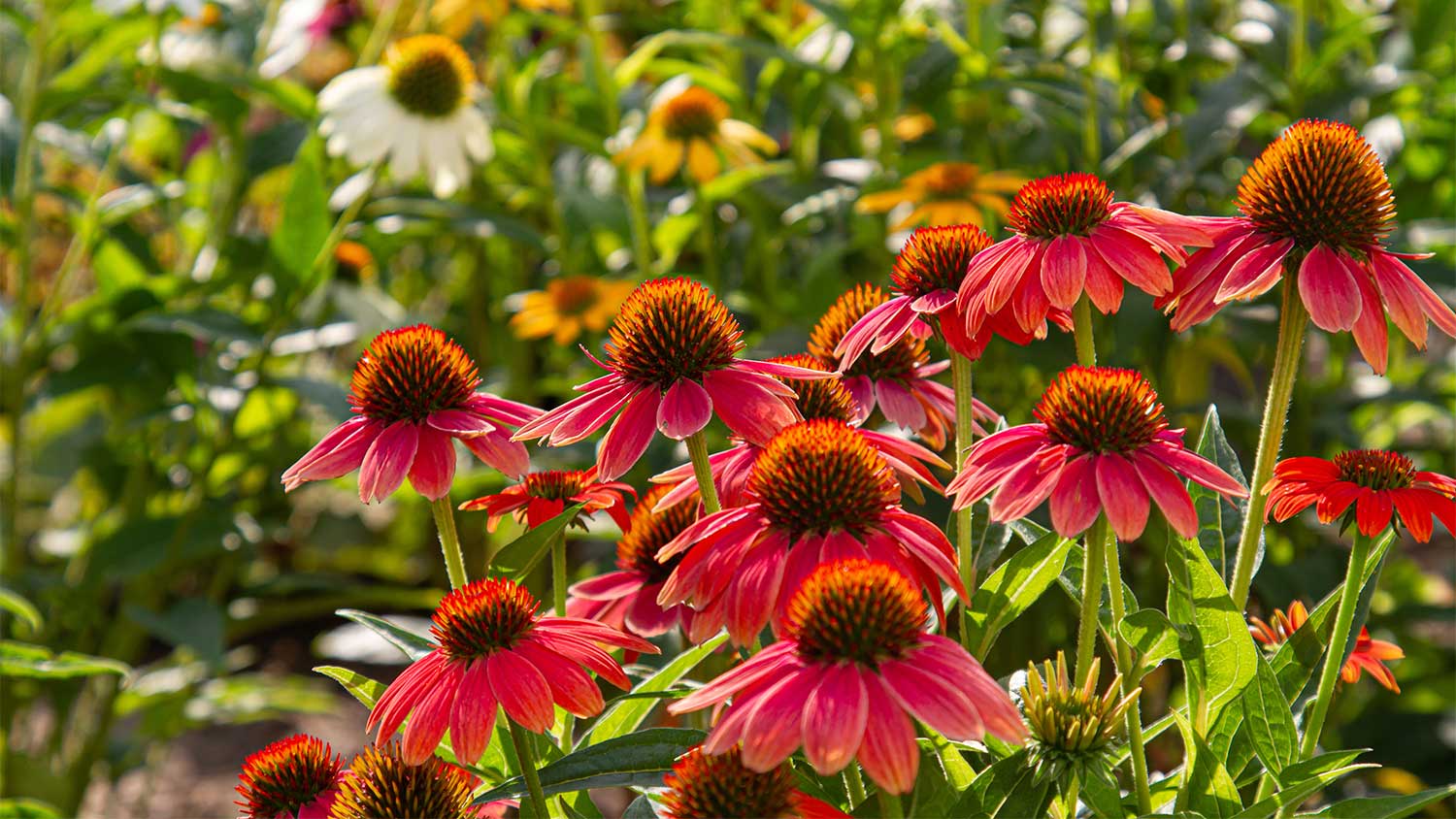
Best for: Fall blooms, summer blooms, drought tolerance, deer resistance, and height (depending on variety)
Consider coneflowers of the Echinacea genus for a burst of warm tones, like pink, red, orange, or yellow. These plants will grow up to 5 feet tall and a couple of feet wide, plus they are resistant to many gardening woes, like drought and heat.
Hardiness zone: Coneflowers grow well in zones 3 to 9.
Water: Give your coneflowers about 1 inch of water per week.
Soil: The best soil for coneflowers is neutral with a pH of 6.5 to 7.
Sunlight: Most coneflowers need full sun, but some varieties can tolerate partial shade.
3. Lantana
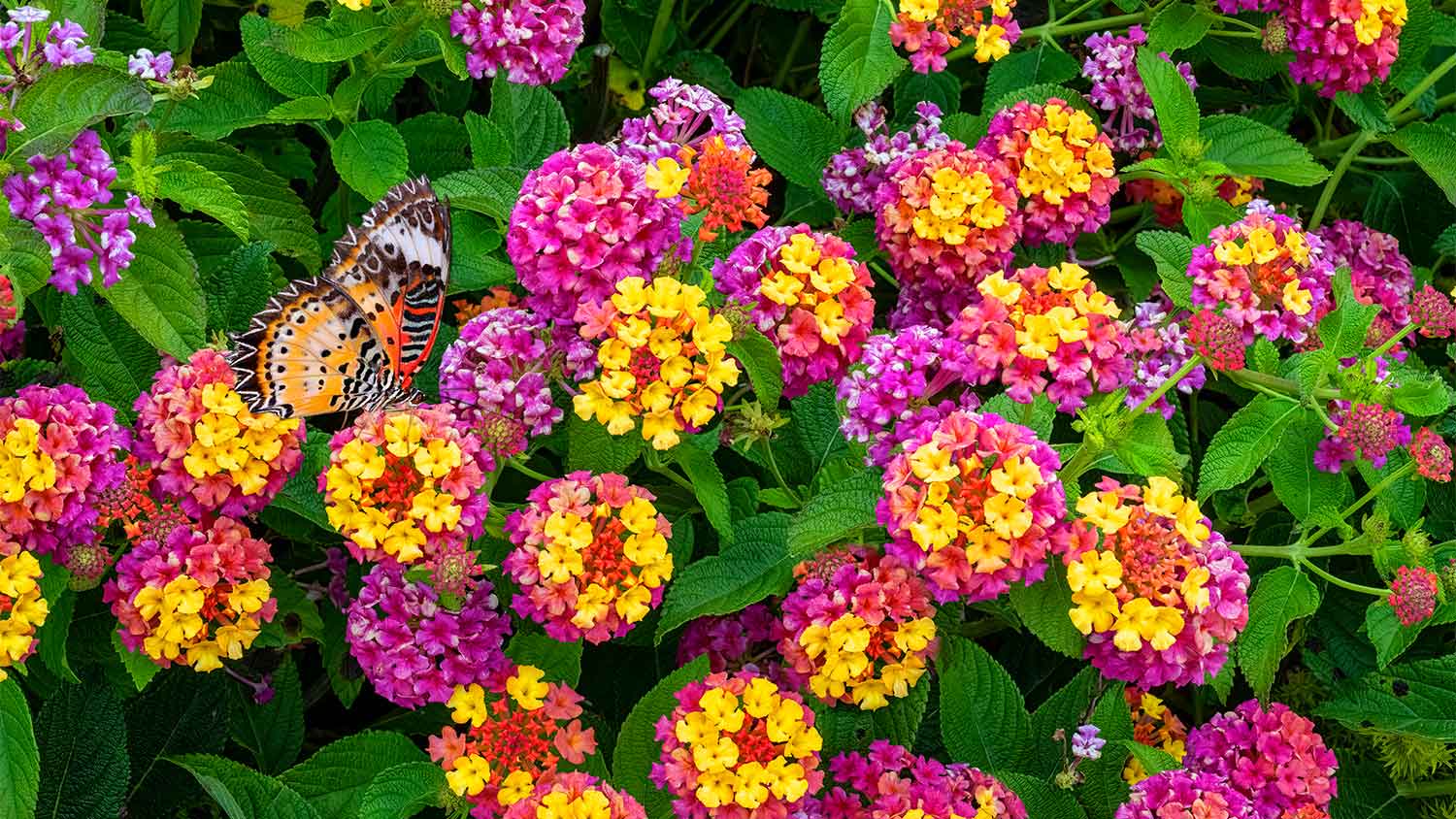
Best for: Brightly colored gardens in warm climates and butterfly or hummingbird gardens
For plants that bloom most of the year, consider the colorful, tiny flower clusters of lantana plants, which bloom from spring through fall and even longer in warmer locations. This is a perfect addition to a pollinator garden in your front yard, as these flowers attract butterflies and hummingbirds.
Hardiness zone: Lantana grows in most hardiness zones but only works as a perennial in zones 9 to 11.
Water: Water container plants or young lantana twice per week. Established lantana plants need little watering and are drought-tolerant.
Soil: This perennial will grow in many soil types but prefers slightly acidic soil with a pH of 6 to 6.5.
Sunlight: Lantana needs 6 to 8 hours of full sun exposure daily.
4. Chrysanthemums
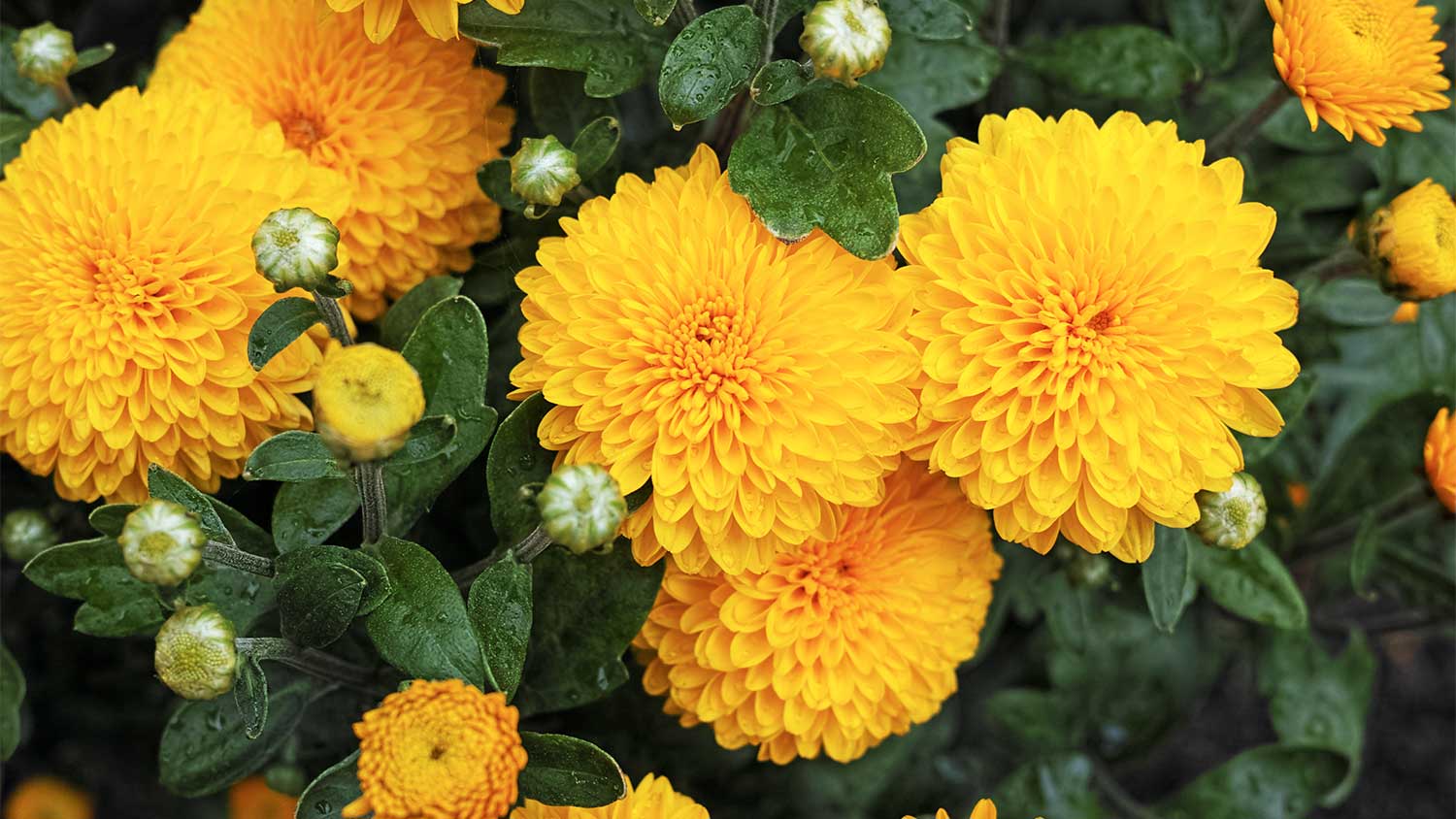
Best for: Container gardens, flower pots, lining walkways or patios, and brightly-colored shrubs
Many flowering plants bloom in spring and summer, so many gardeners love chrysanthemums, or mums, that show off their colors in the fall. These perennials are available in various colors, including white, yellow, orange, red, and purple.
Hardiness zone: Chrysanthemums grow in zones 5 to 9.
Water: Mums need about 1 inch of water per week, and they may need more during the summer.
Soil: The best soil for chrysanthemums has a pH of around 6.5.
Sunlight: Give mums full sun before the flower buds develop for maximum flower yield. Once they begin flowering, move them to partial shade for longer-lasting flowers.
5. Black-Eyed Susans
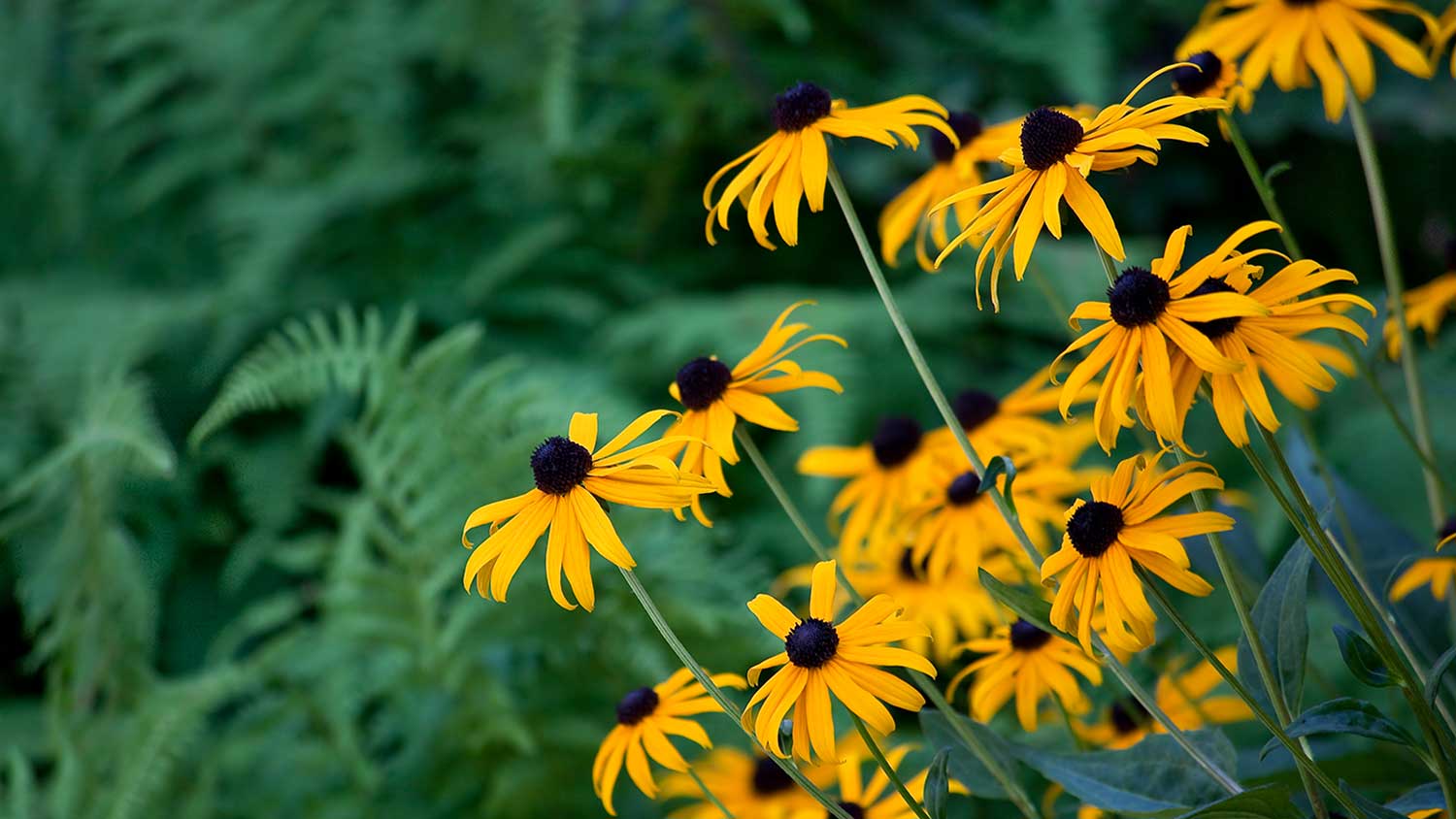
Best for: Butterfly gardens, container gardens, planting in drifts, and borders
Rudbeckia hirta, or black-eyed Susans, are a common wildflower that can give your landscape a more natural look and will attract pollinators. They have a bright, yellow color for a splash of sunshine in your front yard.
Hardiness zone: You can grow black-eyed Susans in hardiness zones 3 through 7.
Water: Keep the soil moist, but make sure it drains well.
Soil: The ideal pH is 6.8.
Sunlight: These flowers thrive in full sun but will accept partial sun.
6. Daylilies
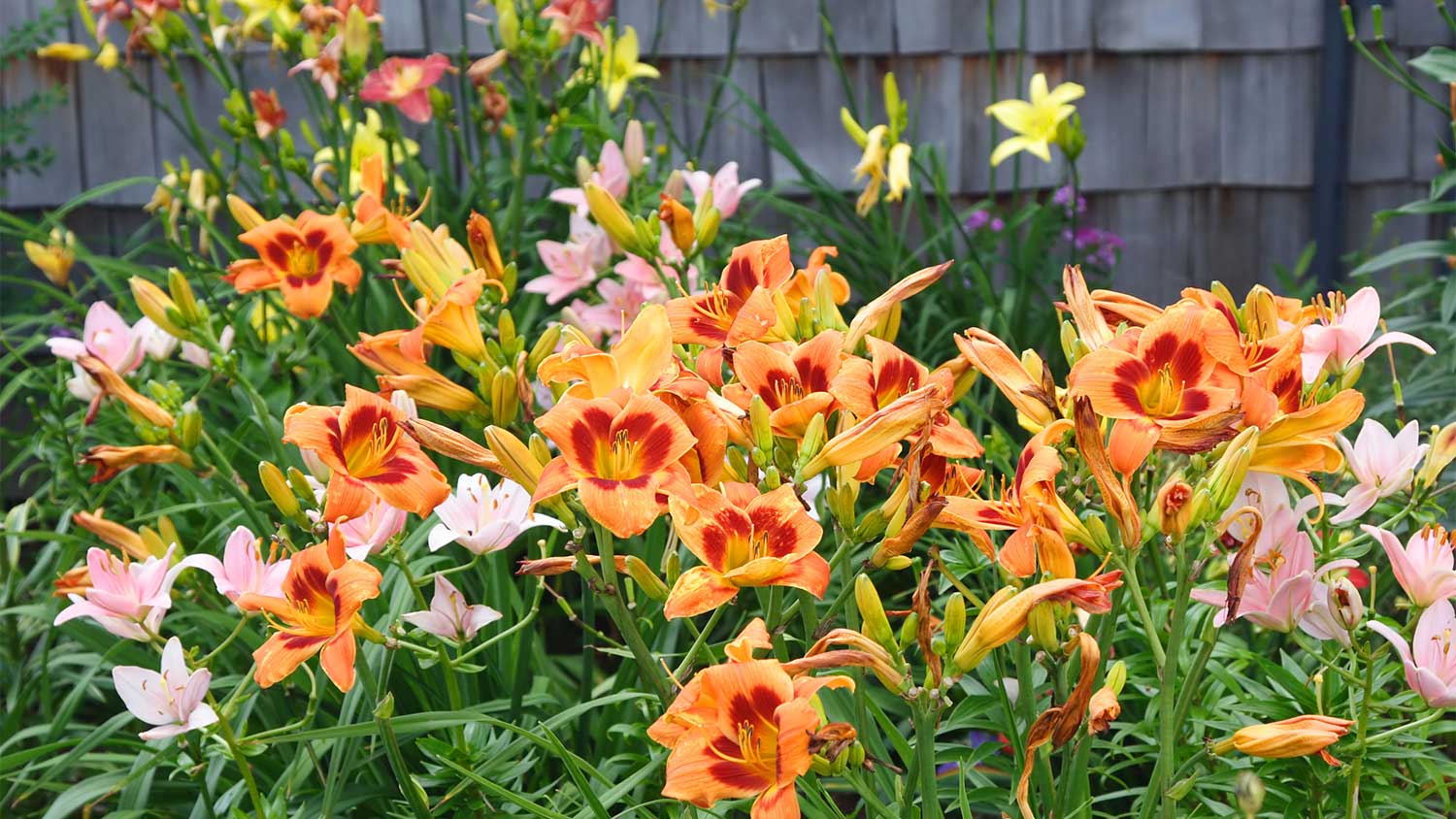
Best for: Layering in front of shrubs, planting in drifts, and filling out gardens with a pop of color
Plant daylilies if you have a brown thumb but still dream of a vibrant front garden. These hardy flowers add color and charm to a landscape and are almost completely resistant to drought, pests, and disease.
Hardiness zone: Plant daylilies in zones 4 through 9.
Water: Daylilies grow best with about 1 inch of water per week.
Soil: Daylilies can tolerate many types of soil and will grow best in soils with a pH of 6 to 8.
Sunlight: While daylilies prefer full sun, they can survive just about any growing conditions you give them.
7. Amsonia
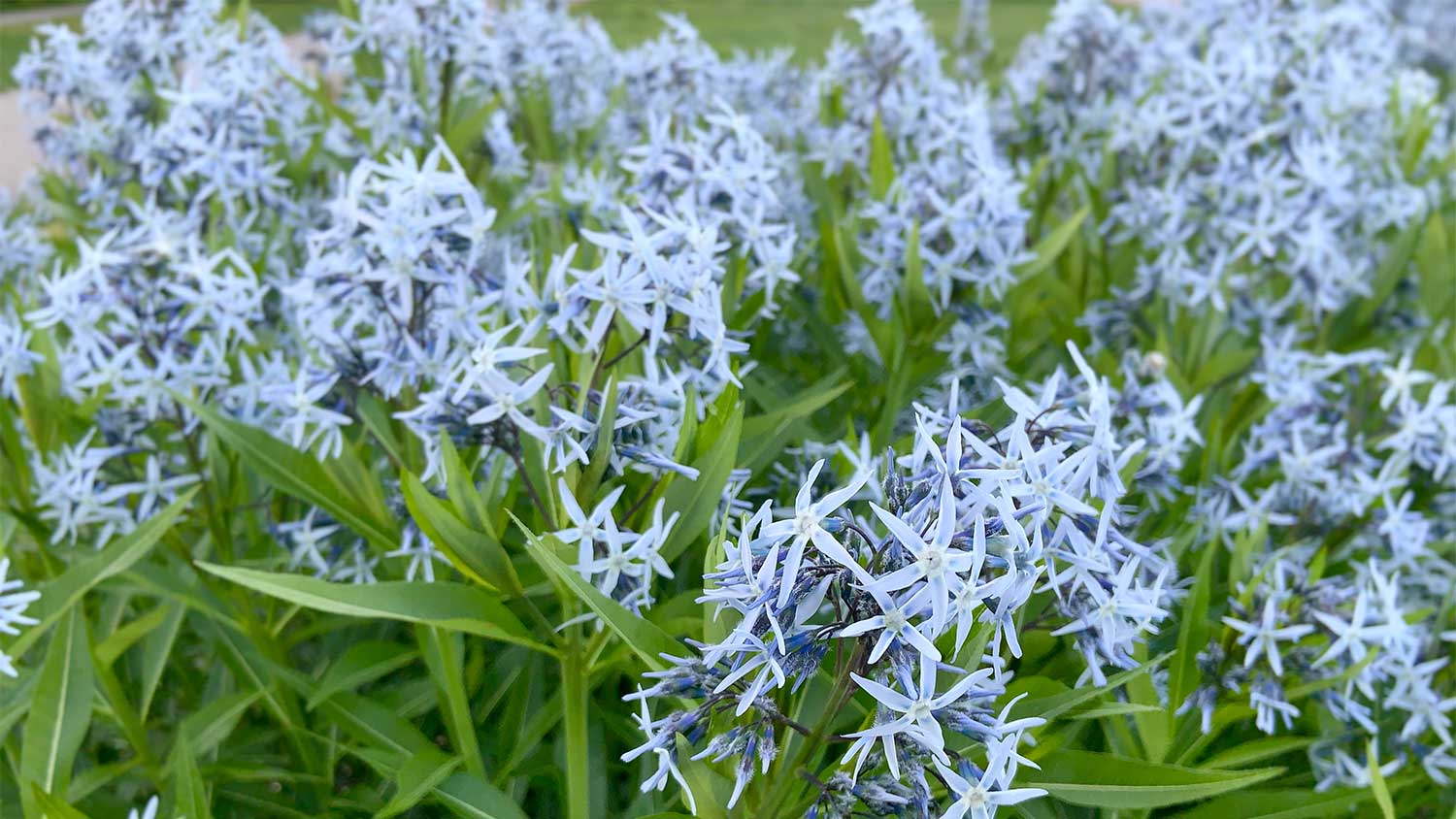
Best for: Cottage gardens, meadows, and borders
Amsonia, also known as bluestars, will add a unique look to your front yard thanks to the long, narrow leaves and periwinkle hue. Even when Amsonia plants aren’t in bloom, their foliage adds interest to any landscape.
Hardiness zone: Depending on the type of plant you purchase, Amsonia will grow in zones 3 to 9 or 6 to 10.
Water: Keep Amsonia moist in full sun. Planting these perennials in partial shade warrants slightly fewer waterings.
Soil: The soil pH for bluestars should range from 6.2 to 7.
Sunlight: Amsonia can grow in partial shade to full sun.
8. Lavender
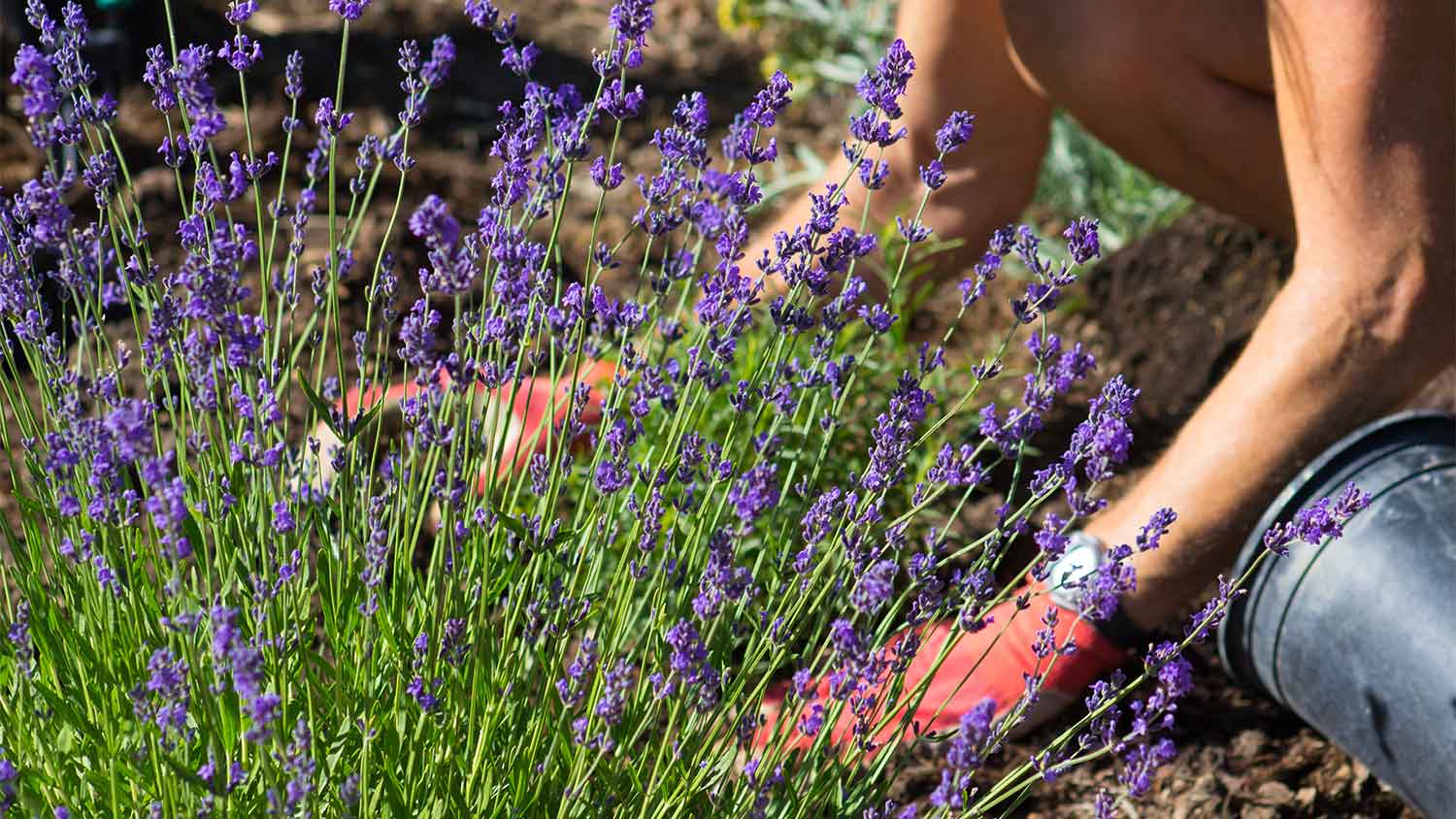
Best uses: Aromatherapy, butterfly, and cottage gardens and repelling unwanted bugs like mosquitos and ticks
Lavender is a long-lasting perennial that is just as functional as it is beautiful. The purple flowers are attractive and fragrant. This plant will attract pollinators and can bloom at various times of the year. Plus, you can harvest the lavender to use in the kitchen for making tea, seasoning meals, or flavoring desserts.
Hardiness zone: Lavender grows in hardiness zones 5 to 8.
Water: Lavender is easy to overwater, which can cause root rot. Water young lavender about once a week and mature lavender every few weeks.
Soil: This perennial needs slightly alkaline soil of 6.7 to 7.3. Acidic soil can kill lavender plants.
Sunlight: Lavender needs full sunlight to grow.
If caring for perennials or any other flower isn’t your forte, hire a local gardener to get your front yard looking great. In addition to flower maintenance, they can help kill weeds and grass in your flower beds or tame unruly ivy. Whatever the plant problem, they’ve got you covered.
9. Catmint
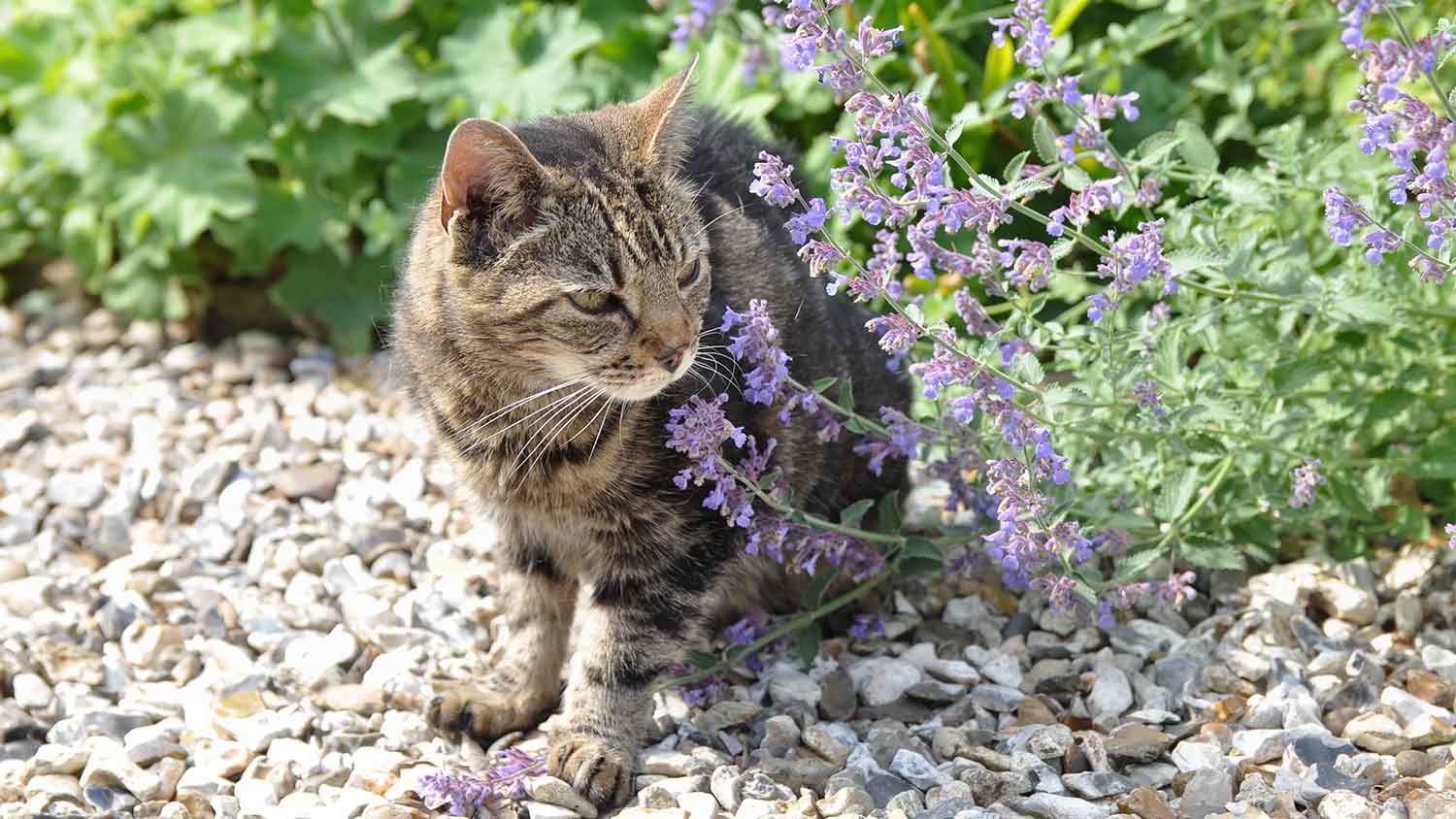
Best for: Homeowners with outdoor cats, beginning gardeners, and borders
Want a plant both you and your cat can enjoy? Try catmint. This drought-tolerant perennial is similar to catnip thanks to a high concentration of nepetalactone, the feline pheromone-like chemical that makes cats go wild.
Unlike catnip, catmint has gorgeous spikes of purple blooms that look less weed-like and more intentional alongside ornamental grasses and mulch-covered flower beds. As a bonus, it attracts pollinators like bees, butterflies, and hummingbirds while deterring deer and rabbits.
Hardiness zone: Catmint grows best in zones 4 to 8.
Water: Water every couple of days the week after planting, then 1 inch per week for at least a month (including rainwater). After that, catmint only requires watering during droughts and periods of extreme heat.
Soil: Catmint grows in most soil types as long as they’re well-draining.
Sunlight: Catmint grows robustly in full sun to partial shade.
10. Hardy Geranium
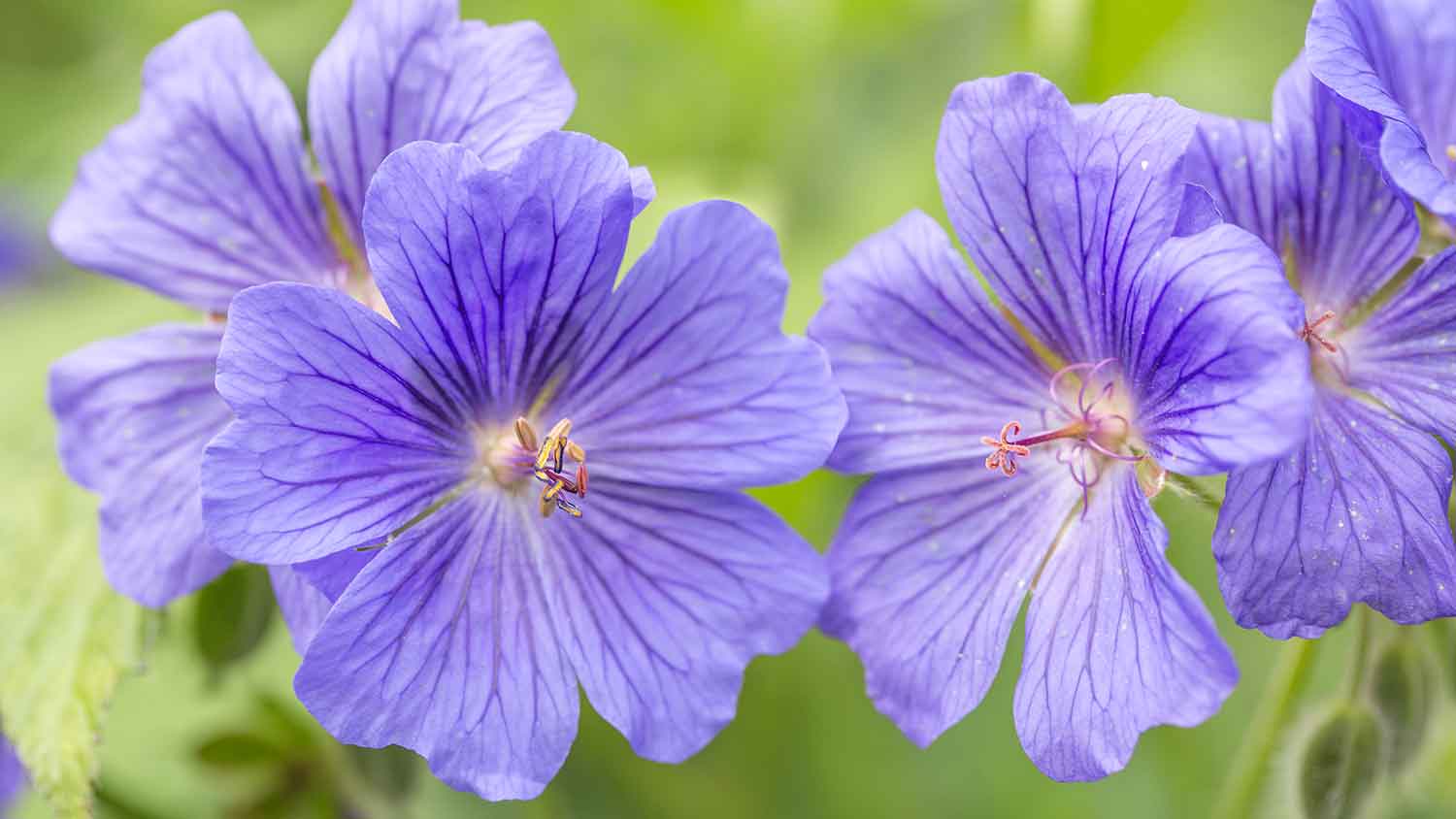
Best for: Butterfly gardens, ground cover, under trees and shrubs, and in front of a mixed border
Hardy geranium, also known as cranesbill geranium, encompasses numerous species within the Geranium genus. These are some of the best perennials for ground cover because they’re low-growing, dense, and spread quickly to fill available space.
These plants can take years to flower from seed, but the small flowers attract bees and butterflies when they do. Hardy geranium flowers come in a range of colors from white, pink, and magenta to purple, blue, and lavender. This perennial blooms in the spring, summer, or fall, depending on the type.
Hardiness zone: Hardy geranium grows best in zones 3 through 9, depending on the species.
Water: Water geraniums when the soil becomes dry, but avoid overhead watering because this plant is prone to fungal disease.
Soil: Hardy geranium can handle slightly acidic, neutral, or alkaline soils.
Sunlight: Depending on the species, hardy geranium will grow in full to partial sun.
11. Phlox
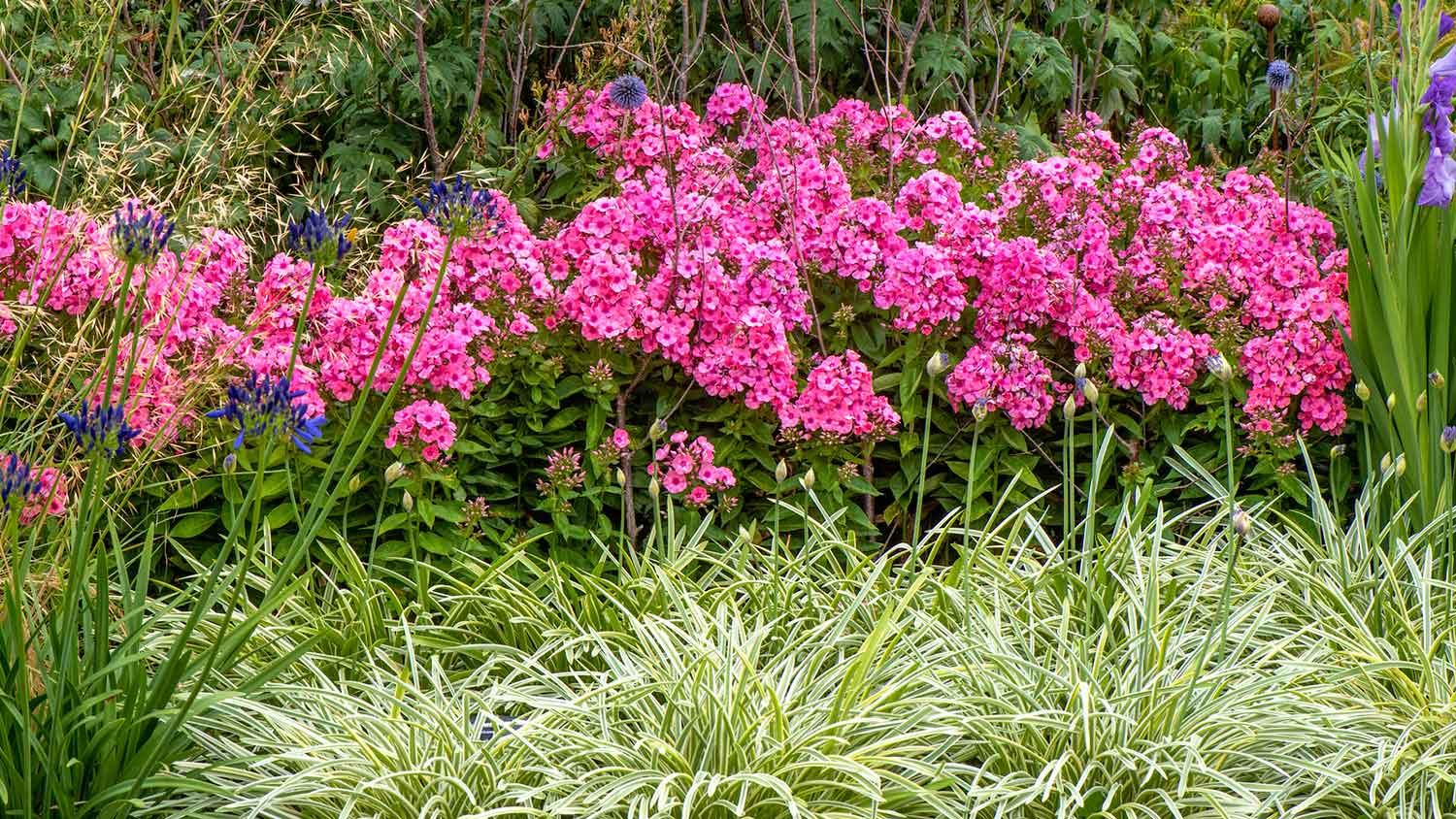
Best for: Colorful ground cover, layering plants of different heights, mass plantings, and containers
There are nearly 70 types of phlox, with perennial and annual species. You'll most commonly find creeping phlox, an intensely flowering ground cover that looks excellent spilling over landscape curbing.
Larger, bushier varieties like woodland or tall phlox are also popular, especially in rustic, cottage-like landscapes. Phlox is a fan favorite because it blooms in partial shade, but it grows best in a nourishing mulch. Expect blooms from spring through late summer.
Ideally, you can make mulch yourself from compost or call a local mulching pro who will understand which type of mulch works best with your garden and when to apply it. They can also deliver and install your mulch to give your plants the best chance to grow and flower.
Hardiness zone: Phlox grows in zones 3 through 9.
Water: Water phlox regularly during the growing season. You’ll know it needs water when it starts to wilt. Always water from the base if possible, not overhead.
Soil: Phlox does best in rich, loamy soil that’s neutral to slightly acidic (5.0 to 8.0 pH).
Sunlight: This plant flowers best in partial shade, but it can tolerate full sun.
12. Shasta Daisy
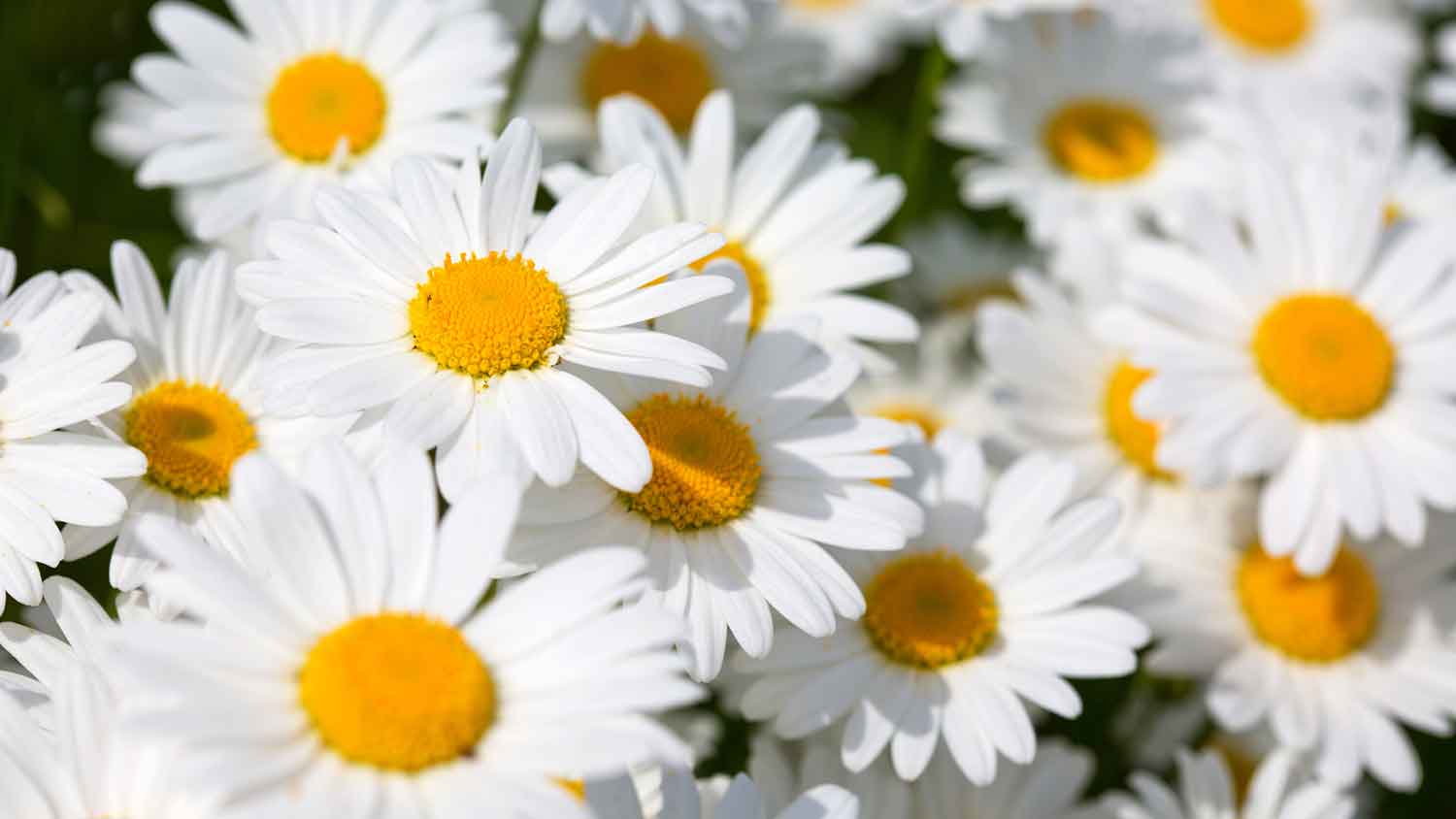
Best for: Cut flower gardens alongside summer-blooming flowers, and homeowners who like the look of classic daisies
When you think of a daisy, odds are you think of one resembling a Shasta daisy. These pretty perennials have the classic white petals with a bright yellow center. This hybrid is technically a cross of oxeye daisy with several wild daisy varieties. There are 69 different cultivars, with different sizes and single or double petals.
These spring- and summer-blooming perennials thrive once established, but plant them in the early spring or summer. If you wait too long, young roots may not survive a cold winter. Keep in mind that daisies can be toxic to pets.
Hardiness zone: Shasta daisies grow in zones 5 through 9.
Water: Give established plants 1 inch of water every week (including rainwater). Shasta daisies are sensitive to overwatering and are drought-tolerant for short periods.
Soil: Shasta daisies tolerate various soil types, but they flourish in well-draining, dry-to-moist, neutral soil.
Sunlight: Shasta daisies grow best in full to partial sunlight.
13. Yarrow
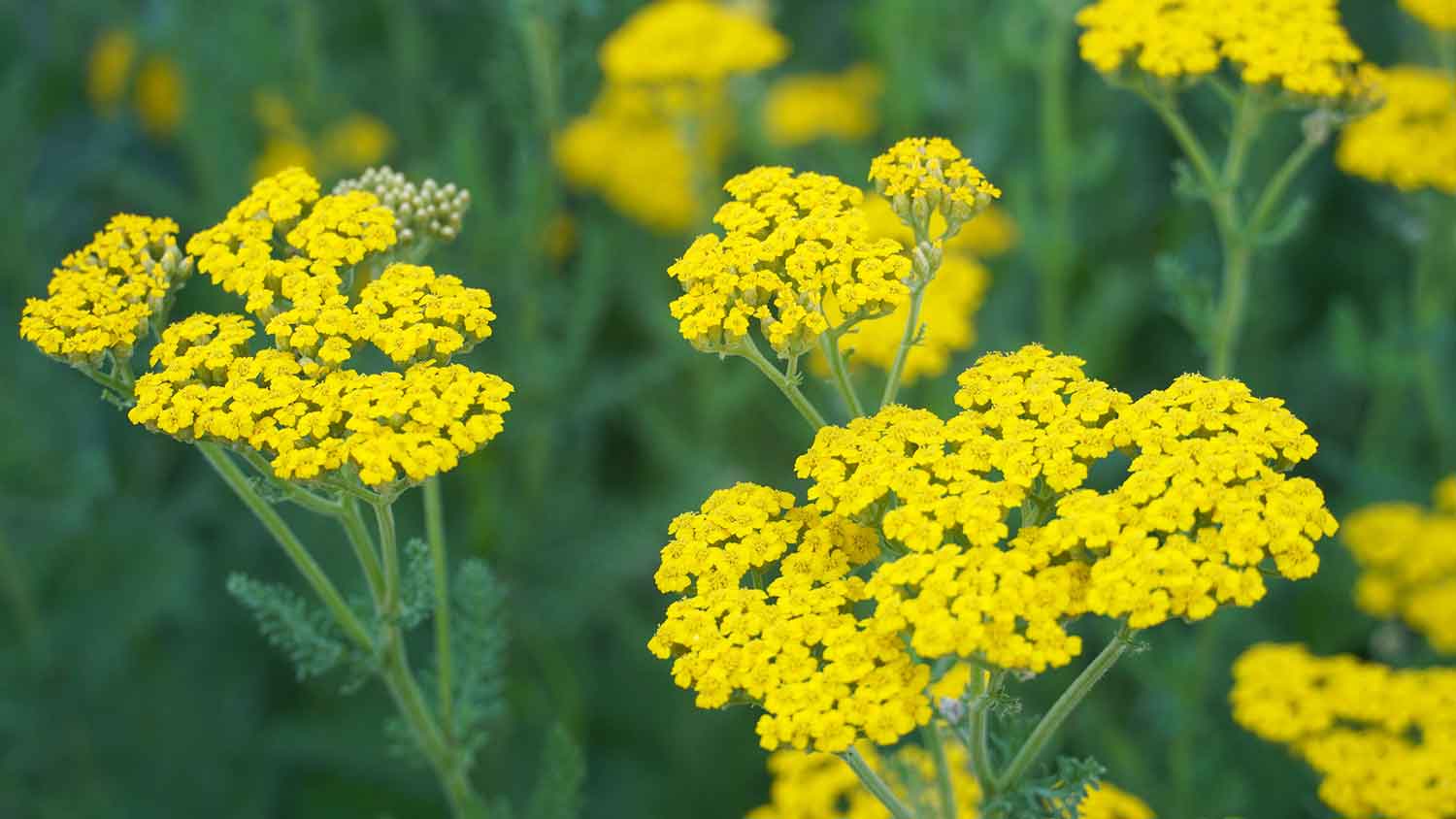
Best for: A companion plant to heavy feeders like tomatoes, cabbage, and eggplant
Yarrow thrives in hot and dry areas with gorgeous fern-like foliage and colorful blooms ranging from bright yellow and orange to pink, red, or white. This is one of the best perennials if you don’t like regularly watering your garden—especially if you want to control erosion on a small slope without regrading your yard, which involves excavating and backfilling to correct a slope. Expect yarrow to bloom in the fall, spring, and summer, depending on your hardiness zone.
Remember that yarrow is a vigorous grower, and you’ll commonly find it in fields or on roadsides. While it’s not considered invasive, it can get out of control without maintenance. It’s also toxic to pets and horses.
Hardiness zone: Yarrow grows in zones 3 through 10.
Water: Yarrow can’t tolerate soil that is constantly wet. Only water yarrow if you receive less than 1 inch of rain per week during the growing season.
Soil: Yarrow grows best in loamy, well-drained, and acidic soil (4.5–7.0 pH).
Sunlight: Yarrow grows as a compact plant with tons of flowers in full sun. In partial sun or shade, it can start to look leggy.
14. Red Hot Poker
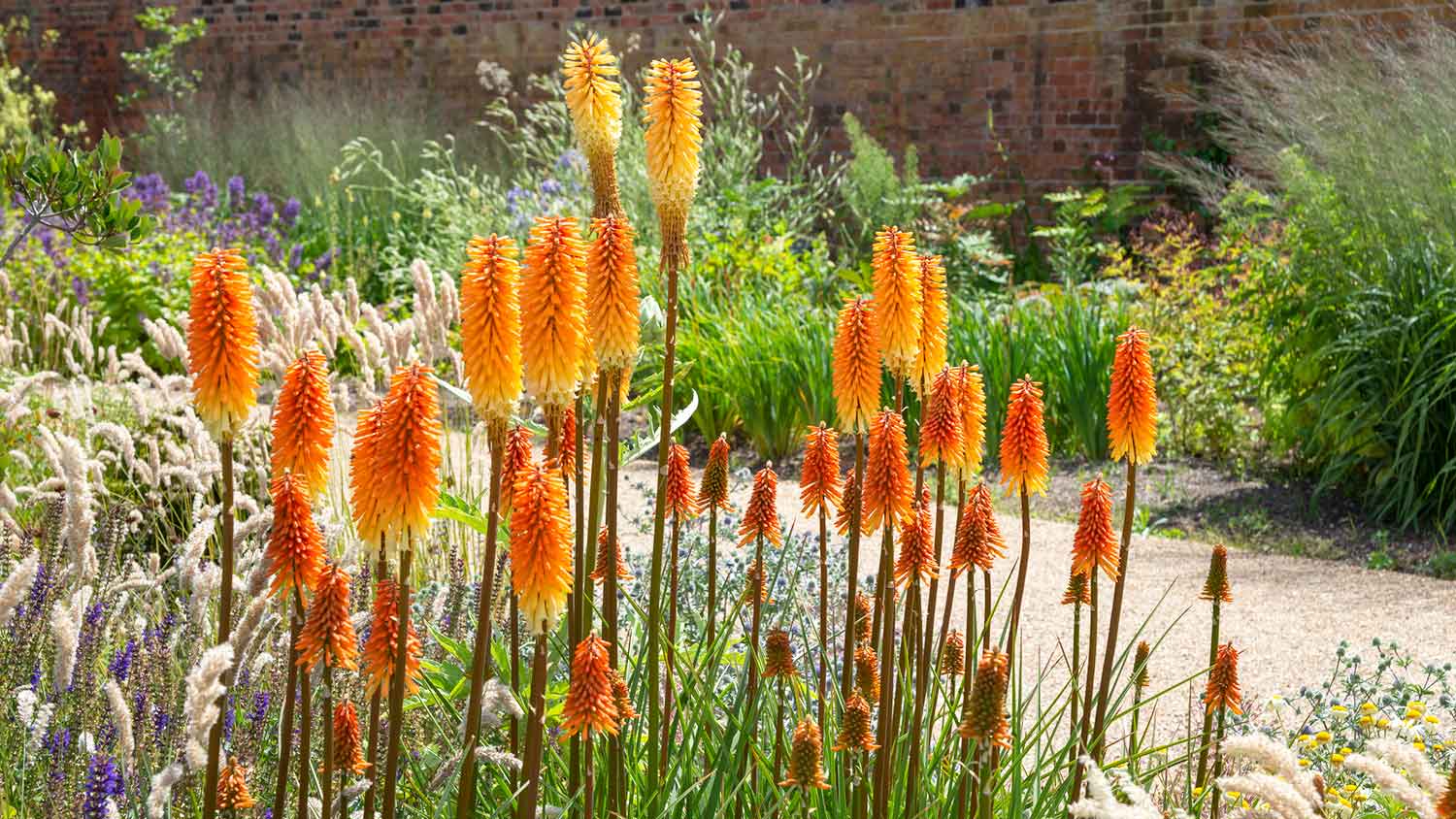
Best for: A show-stopping landscape centerpiece, pops of color alongside ornamental grasses and mulching, and adding height and color to a landscape feature
Red hot pokers, also known as torch lilies, are flowering perennials that push out tall, cone-like blooms in shades of red, orange, and yellow. Technically, they aren’t lilies, but there are more than 60 different species.
If you don’t want to landscape with prairie grass, red hot pokers are one of the best perennials for height. You can find varieties between 1 and 4 feet tall, and they’re a favorite for pollinators like bees and butterflies. Just keep in mind that in some areas, this perennial is considered invasive. This perennial blooms in the spring and summer.
Hardiness zone: Red hot poker blooms in zones 5 to 9.
Water: This perennial is drought-tolerant once established. Provide 1 inch of water per week during periods without rain or high temperatures.
Soil: Red hot poker does well in well-drained soil with a neutral to slightly alkaline pH.
Sunlight: This flower grows best in full sun.
15. Russian Sage
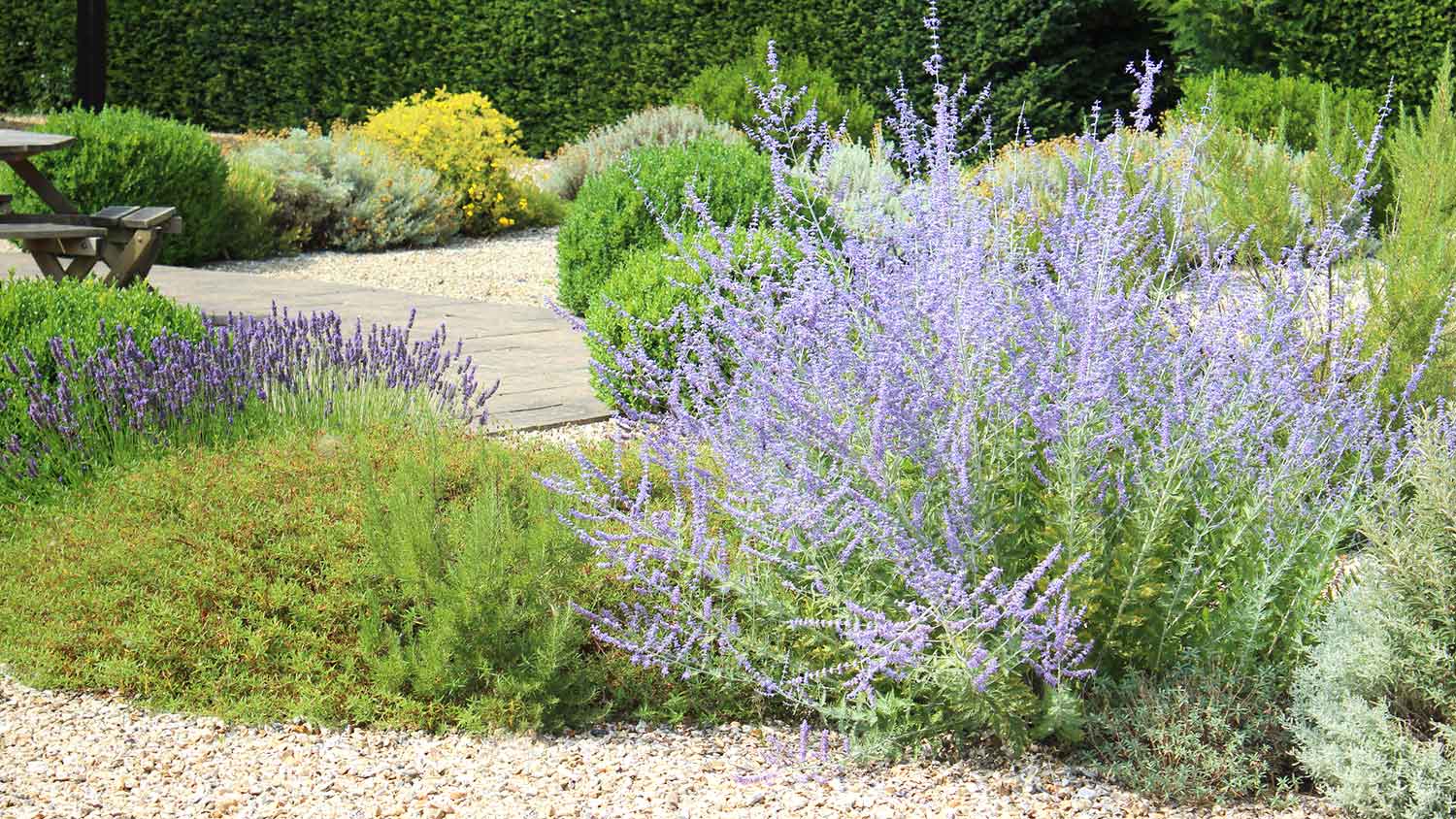
Best for: Spring and fall blooms and adding color and height to a xeriscape
Russian sage is a bushy perennial that pushes out spears of lavender flowers with gray-green foliage. Despite the name, it’s not a type of sage. It’s actually in the mint family. This plant blooms in summer and fall, giving the perfect pop of color after spring blooms have passed. Thanks to its long growing season and drought tolerance, you'll see it in xeriscaping.
Hardiness zone: Russian sage will survive in hardiness zones 3 and 4, though it’s hardiest in zones 5 through 9.
Water: Russian sage is extremely drought tolerant once established and may develop root rot in wet or poorly-draining soil. Only water it during periods of drought and extreme heat.
Soil: Russian sage prefers medium-to-dry, alkaline soil (around pH 7), but it can withstand anywhere from pH 6.5 to 8.0.
Sunlight: Russian sage does best in full sunlight.
16. Sedum
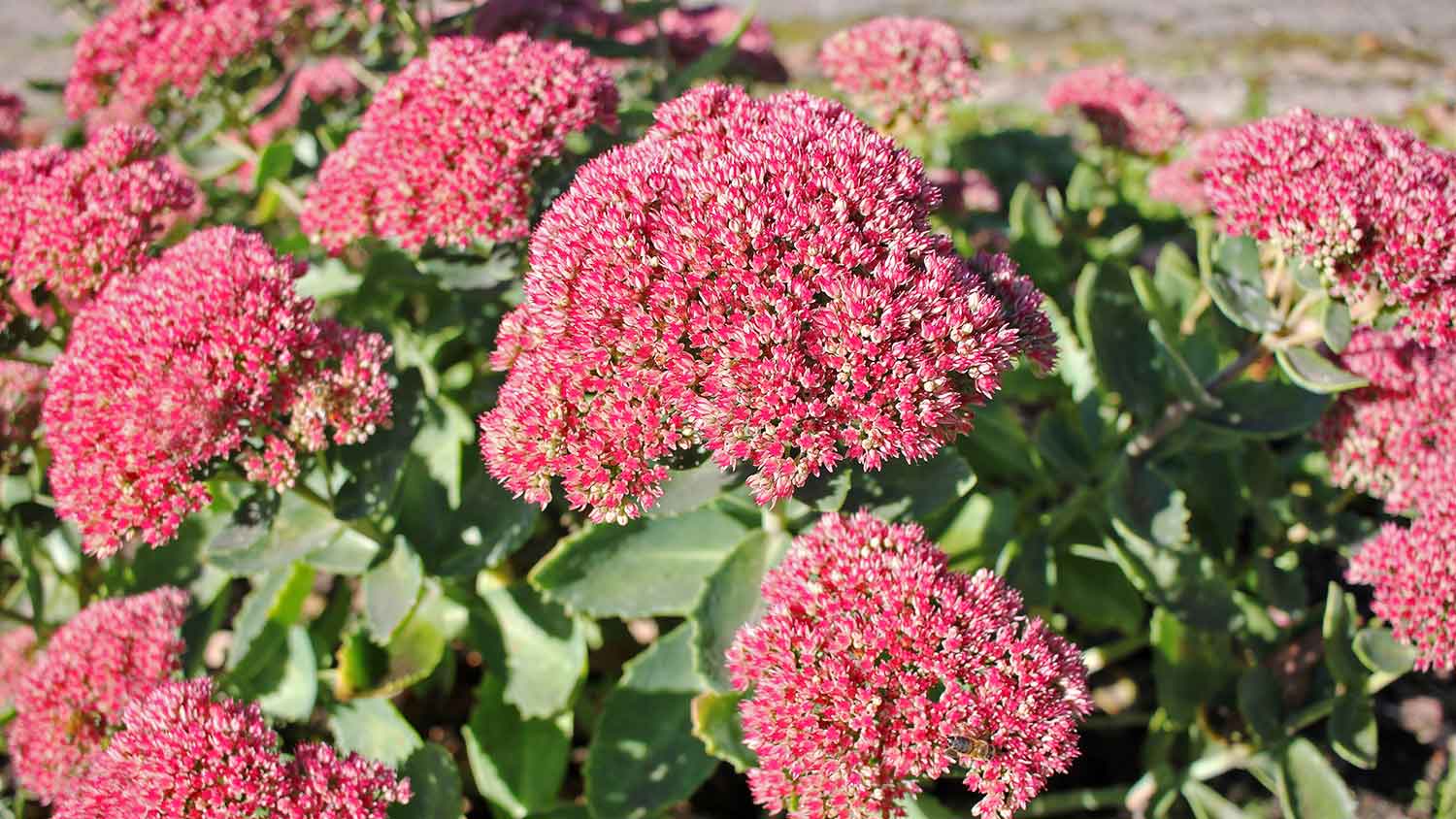
Best for: Xeriscapes, spilling over rock walls, lining pathways, low-maintenance gardeners, attracting pollinators and birds, and repelling deer
Sedum are an extremely diverse group of perennials, but their hallmark is their succulent-like foliage and star-shaped flowers. You’ll find clusters of lush yellow or magenta flowers bursting from bright green foliage, leaves tipped with yellow or pink stripes, and plants with burgundy, purple, or gray leaves.
This plant’s popularity comes from its high drought tolerance. It’s an excellent ground cover for rock gardens, and some varieties creep and grow upright. It attracts pollinators and birds, but deer are largely uninterested. If you hire a landscaper, they can help you choose the right variety for your home.
Hardiness zone: Sedum grows in hardiness zones 3 through 10.
Water: Sedum has succulent leaves and stems that store water, making them ideal for xeriscapes. If waterlogged, the roots can rot.
Soil: Sedums aren’t too picky about soil, though they grow best in soil that’s slightly acidic to neutral (pH 6.0 to 7.0).
Sunlight: Sedum grows best in full to partial sun.
Paige Bennett contributed to this piece.





- Landscapers
- Tree Surgeons
- Gardening Services
- Landscape Architects
- Sod Installation
- Tennis Court Contractors
- Landscape Design
- Retaining Wall Companies
- Grading Companies
- Landscape Rock & Sand Delivery
- Mulch Delivery Services
- Pond Companies
- Artificial Grass Companies
- Shrub Removal & Trimming
- Backyard Design Companies
- Commercial Landscaping
- Koi Pond Services
- Backyard Landscapers
- Trampoline Assembly
- Hedge Trimming
- Pond Services
- Garden Design
- Outdoor Plant Watering
- Putting Greens
- French Drains
- Turf Installation
- Sod Removal Services
- Lawn Repair Services
- Brush Chipping Services
- Hardscape Contractor
- Landscape Rock Removal
- 53 Summer Flowers: Your Guide to a Vibrant Garden
- 11 Fall Flowers to Plant for a Beautiful Garden
- Flowers That Will Add Color to Your Garden Throughout the Year
- The Top 20 New Plants Hitting the Market in 2024
- 15 Tips to Help You Plan a Gorgeous Perennial Garden
- 47 Landscaping Ideas to Consider for Your Home
- How to Choose Perennial Flowers So Your Garden Flourishes
- 9 Top Plants for Fire-Smart Landscaping
- 18 Low-Maintenance Landscaping Ideas
- Annual Vs. Perennial: What to Know Before You Grow








